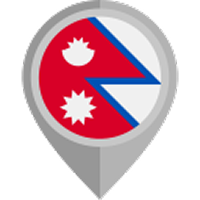Nepal vision | 07/03/2024
So, you have a plan to explore the Annapurna Base Camp. But you have no idea what to do at Annapurna base camp ?
The Annapurna Base Camp trek is situated at an altitude of 4,130 meters (13,549 feet). It offers jaw-dropping views of towering peaks like Annapurna I (8,091 meters) and Machhapuchhre (6,993 meters)
You get to walk through forests, see waterfalls, and look up at giant snowy peaks. This trek also allows you to immerse yourself in the unique cultures of the Gurung and Magar communities you'll encounter along the way.
Without any further ado, let us spill all the secrets of the trail of Annapurna Base Camp.
What are the routes available to do Annapurna base camp from Pokhara ?
Various routes are available to reach Annapurna Base Camp (ABC) from Pokhara. Every route has to offer unique experiences and scenery. Here are some popular routes:

Annapurna Base Camp (via Ghandruk)
Day 1: Pokhara to Ghandruk
Day 2: Ghandruk to Chhomrong
Day 3: Chhomrong to Dovan
Day 4: Dovan to Annapurna Base Camp (ABC)
Day 5: Annapurna Base Camp to Bamboo
Day 6: Bamboo to Jhinu Danda
Day 7: Jhinu Danda to Pokhara
Annapurna Base Camp via Ghorepani and Poon Hill.
Day 1: Pokhara to Tikhedhunga
Day 2: Tikhedhunga to Ghorepani
Day 3: Early morning Poon Hill view and trek to Tadapani
Day 4: Tadapani to Chhomrong
Day 5: Chhomrong to Dovan
Day 6: Dovan to Machhapuchre Base Camp
Day 7: Machhapuchre Base Camp to Annapurna Base Camp
Day 8: Annapurna Base Camp to Bamboo
Day 9: Bamboo to Jhinu Danda
Day 10: Jhinu Danda to Pokhara

How do you prepare for your Annapurna base camp trek ?
The preparation of the Annapurna Circuit trek involves several aspects, including physical fitness, obtaining necessary permits, packing appropriately, and acclimatizing to the altitude.
Physical Fitness Requirements
The Annapurna Circuit trek is a moderately challenging trek that involves walking for several hours daily. It is steep and uneven terrain so you must have a good level of cardiovascular fitness and endurance.
Regular aerobic exercise such as walking, jogging, cycling, or hiking can help improve your fitness level.
Additionally, including strength training exercises to build muscle strength can be beneficial for carrying a backpack and dealing with rugged terrain.
Permits and Paperwork Required
TIMS Card (Trekkers' Information Management System) is required for all trekkers in Nepal. You can obtain it in Kathmandu or Pokhara.
Annapurna Conservation Area Permit (ACAP) is required to enter the Annapurna Conservation Area. You can obtain it in Kathmandu or Pokhara.
Make sure to bring multiple copies of your passport, passport-sized photos, and any other necessary identification or documentation.
Packing List for the Trek
- Clothing: Dressing in layers is essential for varying weather conditions. Include items such as moisture-wicking base layers, insulated mid-layers, a waterproof jacket, trekking pants, thermal underwear, gloves, and a hat.
- Footwear: Sturdy, broken-in hiking boots with good ankle support are crucial. Also, bring comfortable socks and sandals for evenings.
- Backpack: A comfortable, properly fitting backpack with a capacity of around 40-50 liters is suitable for carrying your gear.
- Sleeping Bag: A warm sleeping bag rated for cold temperatures is necessary, especially at higher elevations.
- Trekking Poles: These can provide stability and reduce strain on your knees during descents.
- Personal Hygiene and First Aid Kit: Include items such as sunscreen, lip balm, hand sanitizer, wet wipes, blister treatment, pain relievers, and any personal medications.
Acclimatization Tips
- Ascend gradually to higher altitudes to allow your body time to acclimatize.
- Follow the recommended itinerary and include rest days for acclimatization.
- Stay hydrated by drinking plenty of water, but avoid alcohol and caffeine.
- Pay attention to signs of altitude sickness such as headaches, nausea, dizziness, or difficulty breathing.
- Descend immediately if you experience severe symptoms of altitude sickness.
- Consider medication such as Diamox to help prevent altitude sickness, but consult with a healthcare professional before taking any medication.

Things to do on the way to Annapurna base camp
Annapurna Base Camp (ABC), there's a lot to do that'll make your adventure even more awesome! First, you'll see huge mountains like Annapurna I and Machhapuchhre.
The best time to check them out is at sunrise when they light up with beautiful colors. Don't forget your camera!
Then, explore around the camp, meet other trekkers, and share your incredible stories. You can also go on small walks to see even more amazing views. After all that exploring, relax at one of the cozy teahouses and enjoy a yummy meal.
At night, gaze up at the sky and see the stars twinkling above the mountains. ABC is a place full of adventure and beauty; every moment there will be super exciting!

To wrap up, Trekking to Annapurna Base Camp from Pokhara is an incredible journey filled with breathtaking scenery, cultural experiences, and unforgettable memories.
From the majestic Himalayan peaks to the warm hospitality of local communities, every step of the trek offers something unique.
As you reach Annapurna Base Camp and gaze upon the towering mountains surrounding you, you'll feel a sense of awe and accomplishment like never before.
Nepal Vision Treks adds an extra layer of excitement and professionalism to your adventure. With their expertise and support, you can confidently start this journey, knowing you're in good hands.
So, lace up your boots, pack your bags, and prepare for the adventure of a lifetime in the heart of the Himalayas!
FAQS










